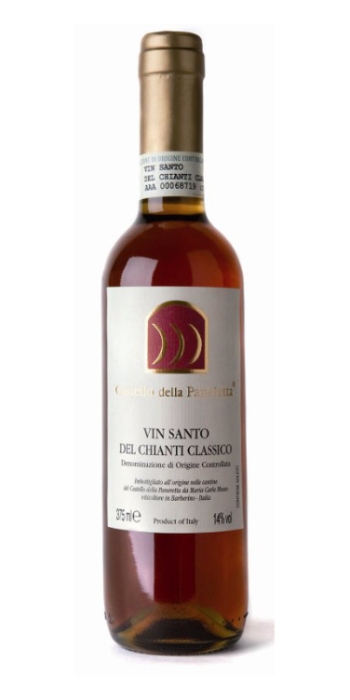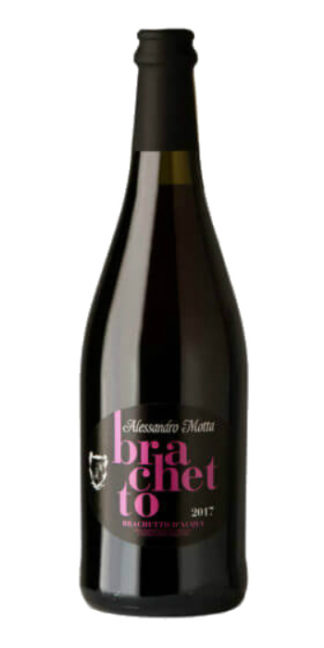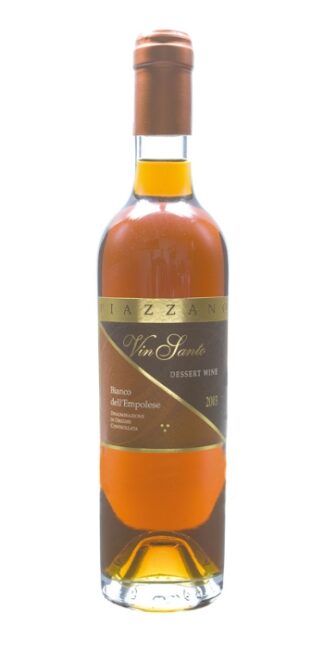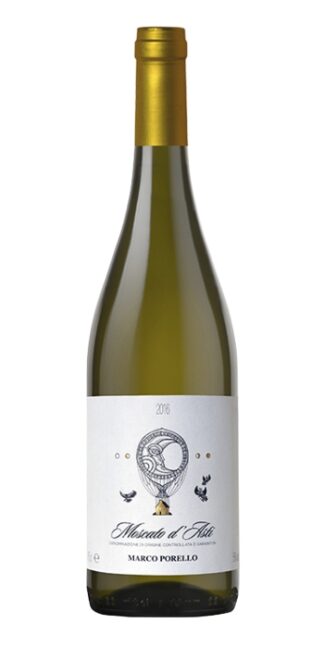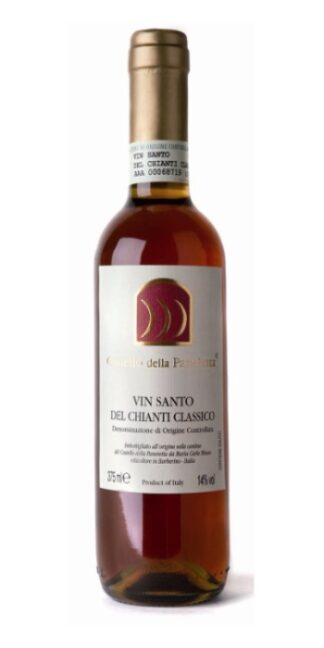Description
Vin Santo del Chianti Classico 2010 Castello della Paneretta
Variety: Trebbiano 70% and Malvasia 30%
Color between intense golden yellow and amber
The nose is colored with splendid aromas of dried fruit, raisins and dried figs. Then dried fruit with walnut, almond and hazelnut. Robinia honey, the most intense flowers and vanilla are not hidden.
On the palate it is abundant in the expression of softness, yet with a firm structure given by minerality and acidity.
Excellent example of Italian dessert wine with a very long tradition.
In addition to the combination with cantucci, it is excellent with dry pastries in general and based on almond paste.
It accompanies, creating an elective affinity, the most famous blue cheeses in the world: Roquefort, Stilton, spicy natural Gorgonzola, Blu di Bufala and aged Strachitunt.
Vin Santo del Chianti Classico 2010 Castello della Paneretta
The grapes come from a small parcel of 0.65 hectares.
After the manual harvest, the grapes are delicately hung in the attic of the wine cellar for a period of 5 months.
Once the optimal level is reached, they are pressed and the oak and chestnut kegs are filled with the obtained must. The caratello is a small traditional barrel from Tuscany with a capacity of 110 liters.
Paneretta Castle
has very ancient origins, which date back to the battle of Montaperti in 1260. With a total area of over three hundred hectares, of which 22 are vineyards, it is one of the largest farms in the area.
Based on the type of soil we can divide the body of the vineyards into three different areas.
The Terrine, Torre a Destra, Torre a Sinistra vineyards have clay with a large amount of light galestri and limestone formations. The strata are arranged in the direction of the hill and the rocky outcrops are weak. Soils are light ocher, little eroded and have an extraordinary physical balance. Full-bodied and well-structured wines are extracted from these soils.
The Ciliegio, Bossolo and Barbiano vineyards have layers of red-purple schistose shale alternating with deposits of clayey and loamy soils. The wines of these lands are produced leaner wines, but with greater finesse.
Finally, from the Querciole and Poggio vineyards They are semi-flat soils located on top of the hills. Here we can observe the process of ancient formation dating back to climatic eras of a completely different nature, where the aggression of iron and aluminum on the limestone banks, gave rise to deeper and stronger soils. The position of these lands combined with their exposure there protected from washout and made more generous.
